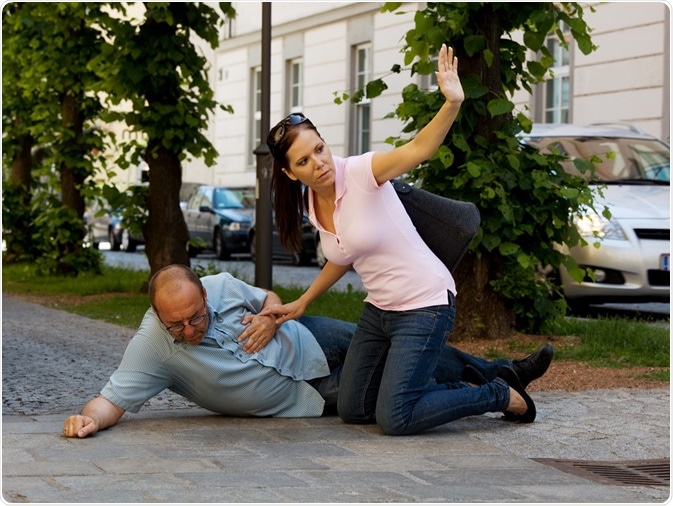Stroke, also known as cerebrovascular accident (CVA), is a condition wherein the blood flow to the brain is interrupted. When this happens, the brain is deprived of oxygen, leading to cell death and brain damage.
 Credit: Lisa S./Shutterstock.com
Credit: Lisa S./Shutterstock.com
What is stroke?
A stroke happens when the blood supply carrying oxygen to the brain is suddenly interrupted. Usually, this occurs when a blood vessel in the brain ruptures, spilling blood to the spaces around the brain cells. Every year, about 795,000 people globally experience a new or recurrent stroke.
Causes of stroke
The brain needs oxygen and nutrients to function appropriately. When the blood supply to the brain is stopped, the brain cells start dying. This may lead to disability, severe brain injury, and even death.
There are two major types of stroke. Ischemic stroke accounts for 85% of all stroke cases. It occurs when a blood clot obstructs the blood flow to the brain. Hemorrhagic stroke is more severe. It involves the rupture of a blood vessel supplying to the brain.
A less common type of stroke is a transient ischemic attack (TIA), wherein the blood supply to the brain is temporarily blocked. Some health conditions increase the risk of having a stroke. These include high cholesterol levels, diabetes, high blood pressure, and atrial fibrillation.
Signs and symptoms of stroke
A stroke is a medical emergency. Watch out for these signs and symptoms if you think someone may be having a stroke.
- Numbness or weakness on one side of the body (face, arms, and legs)
- Slurred speech
- Difficulty understanding speech
- Trouble walking
- Dizziness
- Difficulty seeing in one or both eyes
- Sudden and severe headache
- Loss of consciousness
Stroke: first response
During a stroke or cerebrovascular accident, time is of the essence. The brain can resist the absence of oxygen for around three to six minutes, however it varies from one person to another. If the brain does not receive oxygen for more than this duration, it could lead to serious and irreversible damage.
Hence, immediate medical attention is vital for a person who is having a stroke. If you think someone is having a stroke, call for an ambulance immediately. The sooner the patient is treated, the greater are the chance of survival and recovery.
If the patient is conscious:
- Position the patient with the head and shoulders elevated and supported. You can use some pillows.
- Keep the temperature comfortable.
- Loosen any tight clothing.
- Ensure the airway is clear and not obstructed.
- Do not give anything to eat or drink.
If the person is unconscious:
- Check for breathing. Tilt the head back and lift the patient’s chin.
- Check if the patient’s chest is rising. Listen if you can hear the person breathing.
- If the person is not breathing, prepare to perform cardiopulmonary resuscitation (CPR). If you haven’t received a CPR training course, consider having one for you to know what to do during emergency situations.
- Let the patient lie down on his or her back.
- Kneel beside the person and give 30 compressions. Push hard and fast.
- Give two rescue breaths. Do this by tilting the head backward and lifting the chin. Give the rescue breaths by pinching the nose shut and giving mouth-to-mouth breaths.
- Perform sets of compressions and rescue breaths until the patient shows signs of life or medical personnel have arrived.
To perform stroke first aid, remember the FAST test:
F – FACE – Look at the patient’s face. Ask him or her to smile. Check if the patient smiles using only one side of the mouth. If yes, this is not normal.
A – ARMS – Ask the patient if he or she can raise both arms. If he or she can only lift one arm, it may signal a stroke.
S – SPEECH – Ask the patient to talk. If he or she cannot speak clearly, it’s not normal.
T – TIME – If all the signs are present, call for medical help immediately.
The first few minutes following a stroke are critical. Immediate medical attention should be provided to prevent serious brain injury.
Helping someone who is having a stroke #FirstAid #PowerOfKindness
Further Reading
Last Updated: Oct 12, 2022